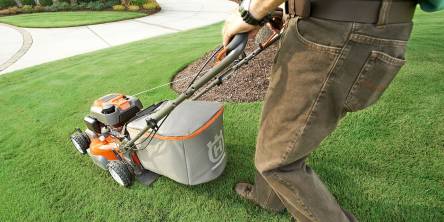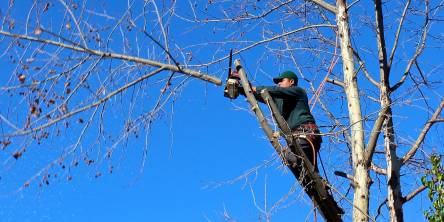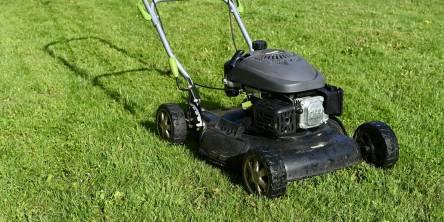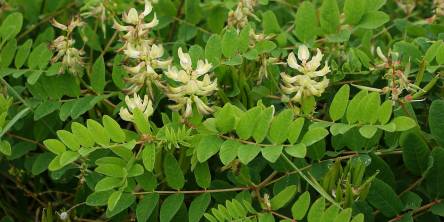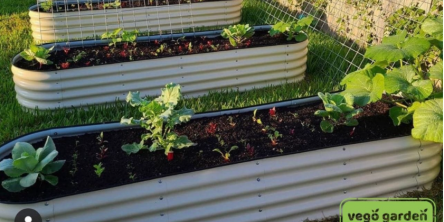From Planning to Planting: What Happens During a Professional Sprinkler Install

Most homeowners think sprinkler installation is just about digging trenches and connecting pipes. The reality involves way more steps than people expect. A professional installation actually starts weeks before any digging happens and continues long after the last sprinkler head goes in the ground.
Understanding what really goes into the process helps explain why professional installation costs what it does - and why trying to skip steps usually backfires.
The Design Phase That Sets Everything Up
Before anyone touches a shovel, the real work begins with surveying your property. Professional installers walk every square foot of your yard, measuring distances and noting elevation changes. They're looking at things most homeowners never consider: where your water meter sits, how your house foundation affects water pressure, and which areas get morning sun versus afternoon shade.
The soil test comes next. Different soil types hold water differently, and clay soil needs a completely different approach than sandy ground. The installer takes samples from multiple spots to understand how water moves through your specific yard. This isn't just about the top few inches - they need to know what's happening down where the root systems actually live.
Then comes the pressure test. Your existing water system might handle your current needs fine, but adding 15 or 20 sprinkler heads changes everything. The installer checks static pressure when no water is running, then tests flow rates with various fixtures turned on. This tells them how many zones your system needs and what type of sprinkler heads will work best.
Creating Zones That Actually Make Sense
Here's where the technical stuff gets interesting. Your yard doesn't just need water - different areas need different amounts at different times. The sunny slope by your driveway has completely different needs than the shaded area under your big oak tree.
Professional installers group areas with similar water needs into zones. Plants that need frequent light watering go together. Areas that need deep, less frequent watering get their own zone. Sun-facing slopes that dry out fast get separated from areas that stay moist longer.
The zone layout also considers your water pressure limitations. Each zone needs enough pressure to run all its sprinklers effectively. Add too many heads to one zone, and the ones farthest from the source barely get any water. The installer calculates exactly how many sprinklers each zone can handle while maintaining proper coverage.
The Underground Infrastructure Nobody Sees
Once the design is finalized, the real construction begins. This is where having professional installation of sprinkler irrigation system really shows its value - there's a lot more underground complexity than most people realize.
The main line installation comes first. This pipe carries water from your house to the valve box, and it needs to be sized correctly for your system's total water demand. Too small, and your pressure drops. The depth matters too - pipes need to sit below the frost line to avoid winter damage, but not so deep that future repairs become major excavations.
Next comes the valve box installation. This is basically the brain of your system, where electronic valves control water flow to each zone. The box needs proper drainage to prevent flooding, and the valves need to be accessible for future maintenance. Professional installers know exactly how to position everything for long-term reliability.
Then the zone piping goes in. Each zone gets its own dedicated line from the valve box, sized according to the number and type of sprinklers it will feed. The installer has to plan the route carefully, avoiding tree roots, utility lines, and future construction areas.
Sprinkler Head Placement That Actually Works
Sprinkler head selection and placement separates professional installations from DIY disasters. Different heads throw water different distances and in different patterns. Rotary heads work great for large open areas but terrible in narrow strips. Spray heads cover smaller areas but provide more precise control.
The installer matches head types to specific areas, then calculates spacing for proper overlap. Good coverage means every part of your lawn gets water from at least two different heads. This prevents dry spots and ensures even watering even when individual heads get clogged or damaged.
Height adjustments matter more than most people think. Heads need to sit flush with the final grade, but they also need to clear any obstacles when they pop up. The installer considers your final landscaping plans, not just how things look on installation day.
The Controller Setup That Brings It All Together
Modern sprinkler controllers are basically small computers, and setting them up properly requires understanding both your system's capabilities and your landscape's needs. The installer programs each zone's run time based on soil type, plant needs, sun exposure, and seasonal variations.
Smart controllers add another layer of complexity. These systems connect to weather data and soil moisture sensors to adjust watering automatically. The installer configures all the settings and teaches the system about your specific property conditions.
Testing Everything Before the Final Inspection
Professional installers don't just turn on the water and hope everything works. They test each zone individually, checking for proper pressure, even coverage, and correct timing. They walk the entire system while it's running, looking for dry spots, overwatered areas, and heads that need adjustment.
The final inspection covers everything from pipe connections to controller programming. Any issues get fixed before the installer considers the job complete. This thorough testing process prevents most of the problems that plague DIY installations.
What Happens After Installation Day
The installation doesn't actually end when the crew leaves. Professional installers typically schedule a follow-up visit after a few weeks of operation. This gives them a chance to see how the system performs under real conditions and make any necessary adjustments.
They also provide detailed instructions for seasonal maintenance and troubleshooting common issues. The better installers explain how to adjust timing for different seasons and what to watch for as your landscape matures and changes.
Why the Process Takes Time
From start to finish, professional sprinkler installation typically takes several weeks. The design phase alone can take a week or more for complex properties. Underground utility marking adds another few days. Weather delays are common since most of the work happens outdoors.
But here's the thing - rushing any part of the process usually creates problems that cost more to fix than the original installation. Professional installers know that taking time upfront prevents expensive callbacks and unhappy customers later.
The systematic approach might seem excessive, but it's what separates installations that work reliably for decades from systems that need constant repairs and adjustments. When you understand everything that goes into a proper installation, the cost starts making a lot more sense.
Similar Articles
Learn how regular lawn care enhances curb appeal, boosts property value, and creates a lush, inviting home exterior with simple, effective practices.
Learn why electric lawn mowers are ideal for families—quieter, cleaner, safer, and easier to use, with less maintenance and more convenience for all.
For many families, the backyard is more than just an outdoor space — it’s a central hub for playtime, barbecues, bonding, and making lifelong memories
Imagine sitting in your backyard on a sunny afternoon. The grass tickles your fingers, and the scent of flowers fills the air. Tiny ants scurry around, a honeybee buzzes from bloom to bloom, and a butterfly flutters past.
Discover why hiring professional tree pruning services ensures safety, promotes tree health, and enhances your property’s beauty with expert care and precision.
Discover how a remote mower enhances safety, cuts consistently, and reduces effort on steep hills, offering a smart, efficient solution for challenging lawn care.
Discover why Kikuyu turf is the top choice for lawns: it's durable, low-maintenance, and thrives in sun or shade. Perfect for any landscape, all year round.
In its natural habitat, Asia, the astragalus plant thrives. Huang qi (yellow leader), as it’s known in China, is regarded as one of the most significant plants in Chinese traditional medicine.
Raised beds need money and forethought. To avoid additional expenses and frustrations, you want to get things right the first time. If you're planning to build a raised bed garden or are just thinking about it, there are a few things to think about before you get started.

